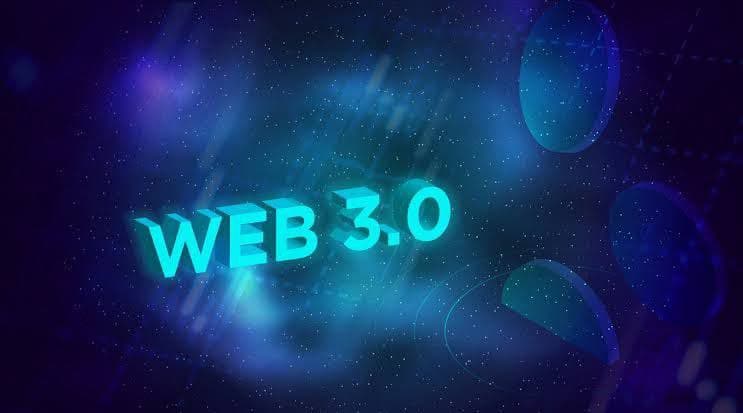Digital transformation is the defining business opportunity of our time, with a market size of 1.25t expected. The following are the current key themes: The metaverse reimagines the frontend, while web3 reimagines the backend. From a business standpoint, web3 provides little insight. What are the business opportunities, why is it relevant, and what solutions already exist?
- Web3 is a new web technology foundation. Its goal is to correct monopolistic structures and enable digital asset ownership.
- For nearly a decade, solutions for web3 infrastructure, apps, and platforms have been developed. Some have already seen widespread adoption.
- Web3 provides opportunities for businesses to transform customer interactions, operations, and business models.
First, Fortune500 corporations took advantage of these opportunities. Businesses would be irresponsible if they ignored them. As a result, it is critical to comprehend what they are and how they can be utilized.
Why is Web3 Important?
Digital transformation is a huge business opportunity as well as one of the most significant societal shifts of our time. By 2026, it is expected to have a global market size of 1.25t. It already accounts for 15.5% of global GDP but grows 2.5 times faster.
The Internet is most likely the most important enabler of digital transformation. Today, we use a technology known as web2. In comparison to web1, it popularised interactive apps, user-generated content, and free access. Web2 business models are typically based on exploiting network effects to gain market dominance and monetizing user data through means such as advertising. Google, Facebook, Apple, and Amazon all have massive market shares in their respective segments.
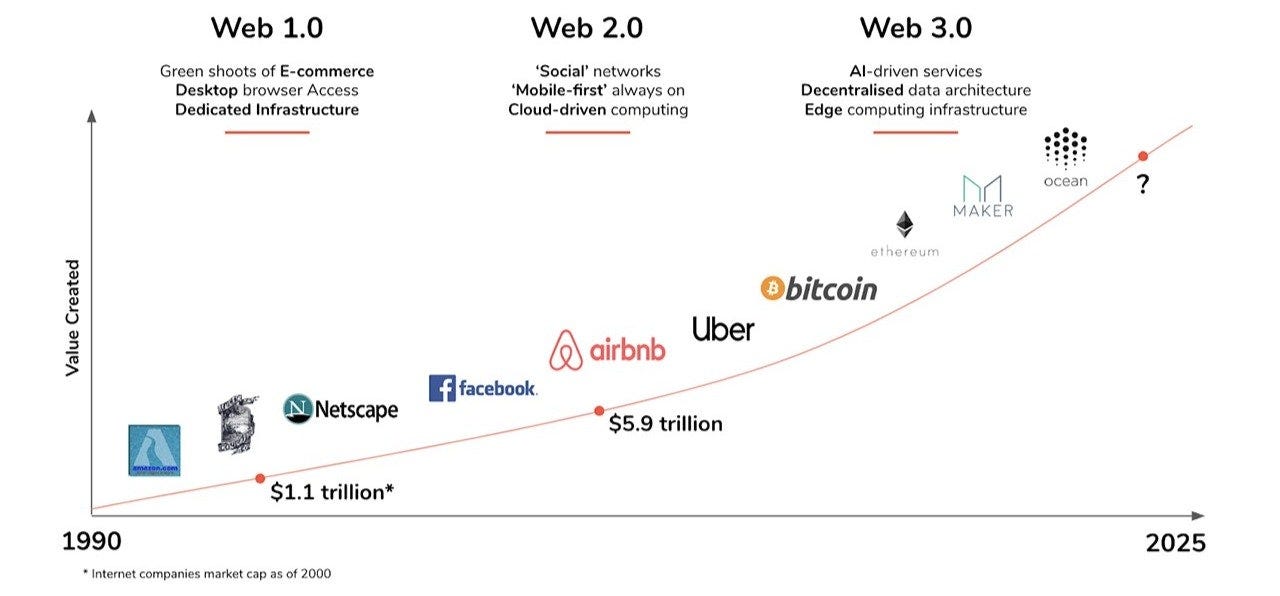
Current trends point to a move away from those structures. More digitally native consumers want to reclaim agency and retain ownership of their digital creations. Blockchain, artificial intelligence, and extended reality are examples of emerging technologies that enable new types of solutions. Businesses are investing in digital twins and preparing for virtual work and the Great Resignation. Furthermore, regulations such as Europe’s GDPR and DMA place a greater emphasis on user agency.
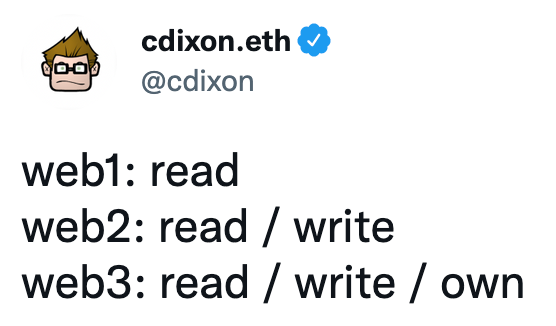
The metaverse and web3 movements are two major themes of this shift. They are two sides of the same coin, resulting in a new Web front- and backend. Whereas the metaverse employs new technologies such as augmented reality and artificial intelligence to create new forms of digital interaction, web3 employs blockchain and tokenization to build a more distributed data layer into the internet that allows for the ownership of digital goods.
The metaverse movement may be the catalyst, but web3 is the necessary enabler to overcome the limitations of web2 that are stifling innovation. Because the success of business models is based on market dominance, web2 suffers from monopolist structures and power abuse.
Consumers are trapped within walled gardens. They are unable to transfer digital goods between platforms. Companies and governments are at risk of misusing personal data, as evidenced by the Cambridge Analytica and PRISM/Snowden scandals. And consumers are at the mercy of providers, who can refuse to provide services to them without recourse.
Businesses are also affected. Platform providers can limit competitors’ access to markets. They collect tolls from others’ value creation and set the rules unilaterally. They can also use their power to take over other people’s businesses. Examples can be found in the Apple App Store and Amazon Marketplace.
The vision of Web3 is to improve this situation. This would represent a shift for consumers from walled gardens to interoperability, from at-risk privacy to data ownership, and from de-platforming risk to censorship resistance. It would represent a shift for businesses from closed to open markets, from value extraction to value ownership, and from market dominance to competition and collaboration.
To visualize web3’s vision, imagine being able to sign in anywhere without having to create a user account with any service. Imagine being able to control who has access to your data and how they use it. Consider the possibility of acquiring ownership of a platform that thrives due to your content.
Where does Web3 stand today?
Web3 infrastructure, applications, and platforms are the three layers that are currently being built.
To realize transaction/programmability layers and decentralized cloud services, Web3 infrastructure components employ peer-to-peer network principles with integrated monetary incentives.
To realize self-sovereign identity and decentralized governance solutions, Web3 applications combine the creation of standards with inherent user empowerment.
Web3 platforms are based on platform business models, but with collaborative ownership to enable self-sovereign marketplaces, global cooperatives/consortia, and ecosystem development.
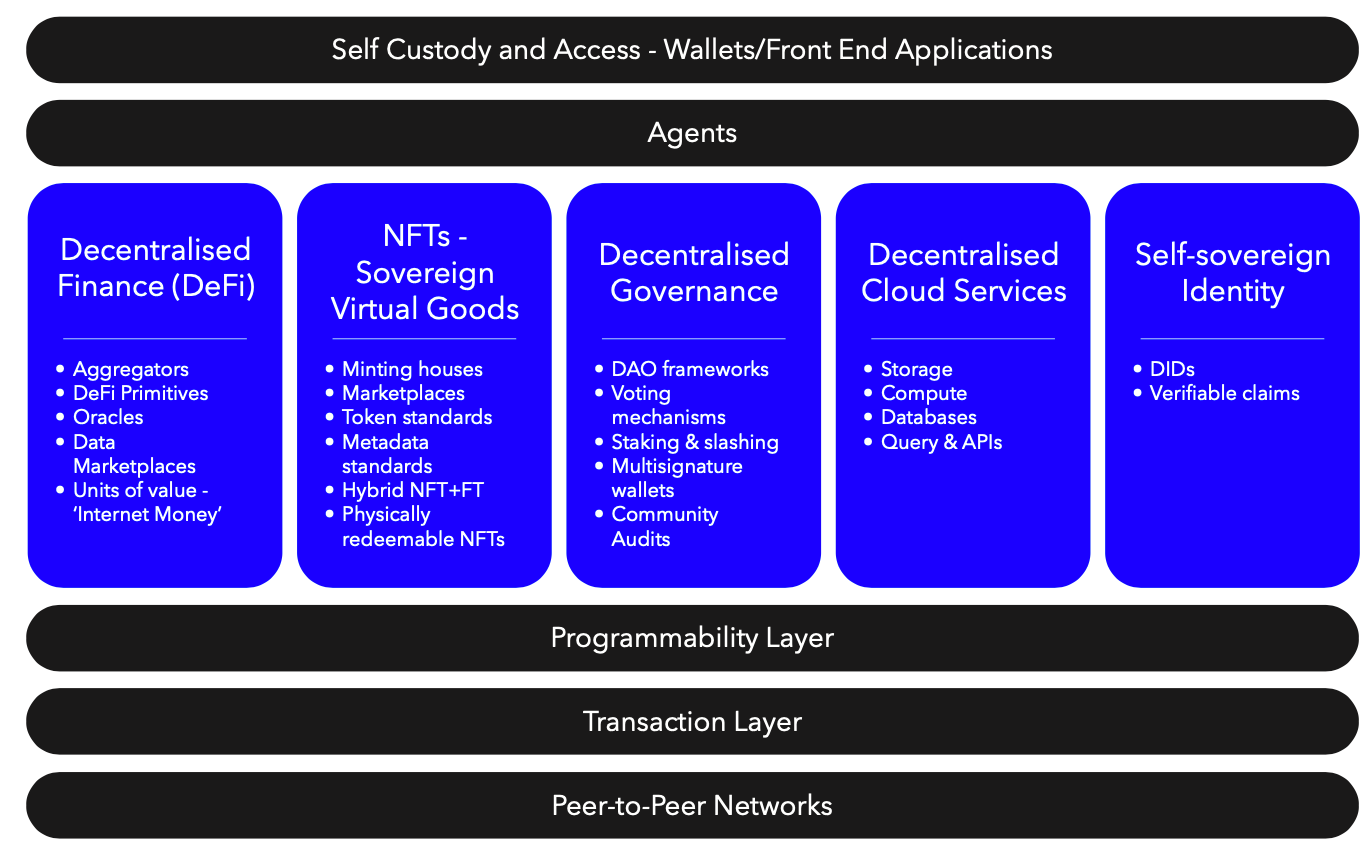
Since 2013, infrastructure components for the transaction/programmability layer have been developed. The technical foundation is provided by smart contract platforms such as Ethereum, BSC, Solana, or Cosmos. Stablecoins such as USDT, USDC, or DAI, built on them, enable financial transactions in US dollars. Furthermore, the NFT standard serves as the technical foundation for digital goods.
Since 2015, decentralized cloud storage services such as IPFS and Filecoin have been developed. Their services are in demand, but they are not yet priced competitively with web2 solutions. Decentralized compute services are in the works.
Self-sovereign identity apps are available in the form of digital wallets like Metamask, Trust Wallet, and Keplr. They have gained acceptance and are now used to interacting with existing web3 platforms. In 2021, Metamask, for example, will have surpassed 20 million monthly active users. Spruce, a newer project, attempts to extend web3 login to any website. Name services like ENS allow you to choose simple wallet names that are similar to email addresses.
Personal data management solutions, such as those offered by Inrupt, are being developed to give users control over their identity, data, and how it is shared with websites. “Personal Online Data Stores” are where data is kept (Pods). When granted permission, websites and apps can interact with Pods and access the data required for specific tasks.
Decentralized governance toolkits such as Aragon enable the establishment and management of digital cooperative software in so-called Decentralized Autonomous Organizations (DAOs).
Since 2020, platforms that operate self-sovereign marketplaces have seen widespread adoption. Decentralized digital currency exchanges like Uniswap, Sushiswap, and Pancakeswap operate at levels comparable to the largest centralized exchanges. Borrowing and lending marketplaces like Compound and Aave manage $20 billion in assets. Ocean protocol data marketplace contains over 600 data sets and provides functionality for privacy-preserving data analysis.
Web3 cooperatives in the form of DAOs have grown in popularity in recent years. Friends with Benefits is a social club that includes a newsletter, city guides, and a Discord group. PleasrDAO and Flamingo pool funds for digital goods speculation. VentureDAO and TempleDAO are venture capital funds. Projects like Molecure and VitaDAO also fund and promote collaboration in life sciences research.
Whole ecosystems have emerged by incorporating self-sovereign marketplaces and web3 cooperatives. Peer-to-peer financial services such as savings, lending, exchanges, trading, and derivatives are examples of Decentralized Finance (DeFi). In recent years, it has expanded to a >200b segment. Outside of the big tech environments, Decentralized AI (DeAI) projects are developing tools for data scientists. In addition, Decentralized Science (DeSci) is establishing community-organized science operations.
How Can Web3 Benefit Businesses?
Some businesses are already utilizing web3. Gucci and other high-end fashion houses began to sell virtual fashion. Beeple’s First 5000 Days sold for nearly $70 million at Christies, putting digital art sales in the spotlight. Manchester City, for example, is creating fan tokens to encourage engagement. Bayer used web3 technology to develop its TraceHarvest solution for tracking produce from seed to supermarket. In addition, Microsoft is developing enterprise services and has invested in Metamask’s creator.
Businesses can consider how web3 can be used to transform customer interactions, and operations, and enable new business models. Similarly, they can consider opportunities from web3 infrastructure, building web3-enabled products, and utilizing web3 platforms.
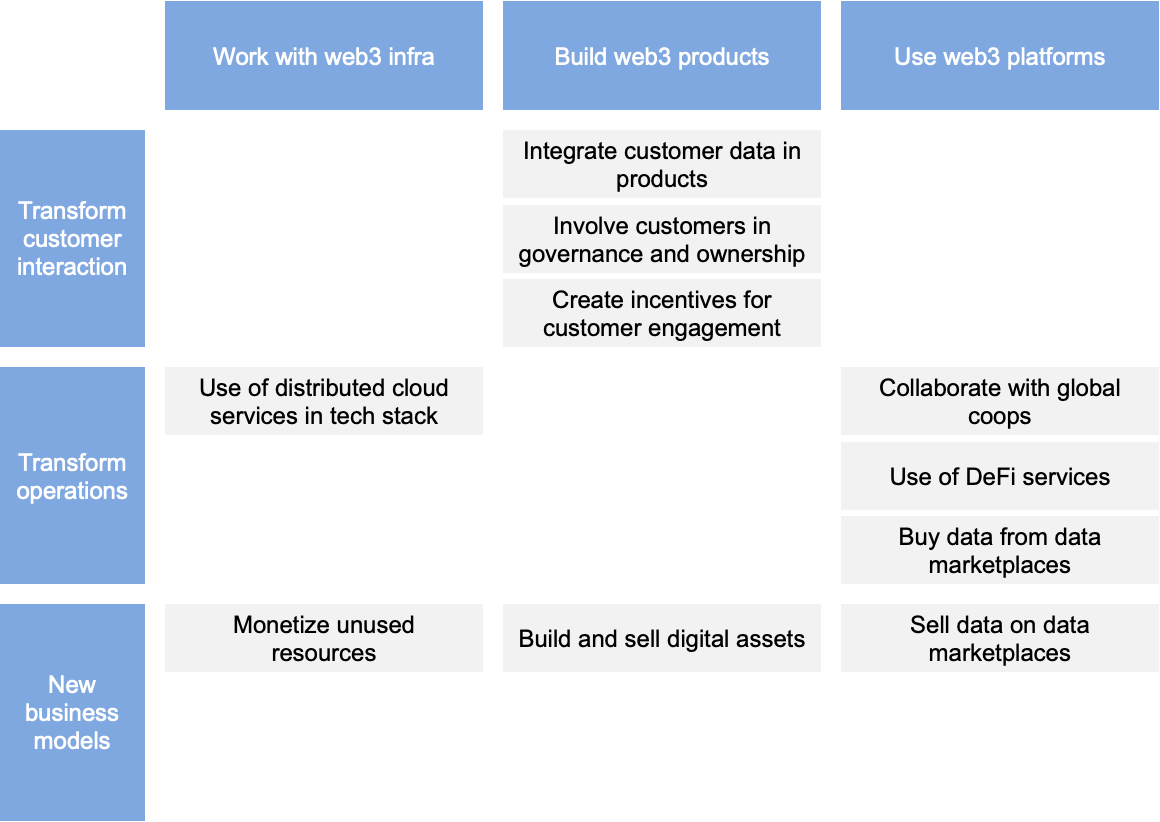
Building web3-enabled products allow for the creation of new types of customer interactions. Personal data could be integrated into a product while protecting users’ privacy, increasing their willingness to share. Products governed by their users could be developed, giving them a say in product decisions and even making them co-owners of the product. Fan tokens, for example, could be used to incentivize brand engagement.
Opportunities for operations transformation can be found by utilizing web3 infrastructure and platforms. Businesses could incorporate distributed cloud services into their technology stack where the benefits outweigh the costs, such as massively distributed computing. They could work with web3 cooperatives, incorporate DeFi services into treasury processes, and look for analytics projects on data marketplaces.
New business opportunities can be found all over the place. They may be able to monetize unused compute and storage resources in distributed cloud service networks. They could create and sell digital goods in the same way that high-end fashion companies do. They could also sell data on data markets without jeopardizing their intellectual property.
What Should We Make of Web3 Criticism?
Web3 has many vocal detractors, including Twitter’s Jack Dorsey and Signal’s Moxie Marlinspike. Packy McCormick makes a compelling case against their viewpoints. The majority of web3 criticism focuses on the current landscape rather than the concept itself. However, there is a reason for criticism on this subject.
Critics claim that web3 is not decentralized and is instead dominated by a few solutions and companies such as Alchemy, Infura, OpenSea, Coinbase, and Binance. While market leaders exist, the openness of technology encourages challengers. Progressive decentralization will most likely occur as markets mature.
They claim that the costs are too high when compared to web2 solutions. This is correct for the current situation, but it disregards scale. Economies of scale will make them more cost-competitive as they grow.
They emphasize the negative consequences of using blockchain technology, such as the use of a lot of energy and the facilitation of crime. The web3 community, at the very least, disagrees. When compared to the existing financial industry, it may not be so bad, and it is also expected to improve with innovations.
Others argue that decentralized solutions exist but have never been widely adopted. One of web3’s distinguishing features is its integrated incentive mechanism. This significantly alters the chances of adoption.
When blockchain technology limitations such as low compute capacities and append-only storage are mentioned, it is usually due to a misunderstanding of web3. Not everything in web3 must be powered by blockchain technology. It serves a specific purpose, which web3 employs.
Some critics are concerned that online harassment, hate speech, and child abuse will become even more difficult to police. This is yet another web3 misunderstanding. It does not preclude institutions from moderating. Although source data is not censored, it can be prevented from appearing in front-ends. Which is not so dissimilar to today.
Many web3 solutions are currently owned by venture capital firms. As a result, one common criticism is that it replaces existing unequal power structures with new ones. This could be true for today’s generation of solutions. Before web3 was widely known, projects required funding. The next generation of solutions has a significantly better negotiating position.
In conclusion, web3 is a maturing sector that will address some of the current issues. For other issues, current solutions may be modified and used indefinitely. Other issues, however, may persist. Ultimately, it comes down to a trade-off between benefits and drawbacks. It’s the same as it always is.
Conclusion
Given the evolution of the metaverse and the shortcomings of web2, there is a clear need for web3. A thriving industry is developing foundational technology, infrastructure, applications, and platforms. It presents opportunities that businesses would be remiss to pass up. There is a valid criticism of the current market landscape, but not to the extent that the concept itself is invalid.
In the future, successful solutions will most likely defy any doctrine. It is impractical to have everything completely decentralized and owned solely by users. There will still be room for centralized elements such as supporting organizations, dubbed “web2.5.”
It will most likely follow the innovator’s dilemma trajectory, as with any other innovation. At first, niche use cases can succeed where web3’s benefits are most important and its shortcomings are less important. Economies of scale will help achieve competitiveness in other areas as the economy grows. And, eventually, it will solidify its position within the context of the internet.
From a business standpoint, data opportunities appear to be underutilized at the moment. They can be found in all dimensions of the introduced framework, but there is little industry traction to realize them. A fascinating follow-up question is how a web3 network for data collaboration in a specific industry might look.


